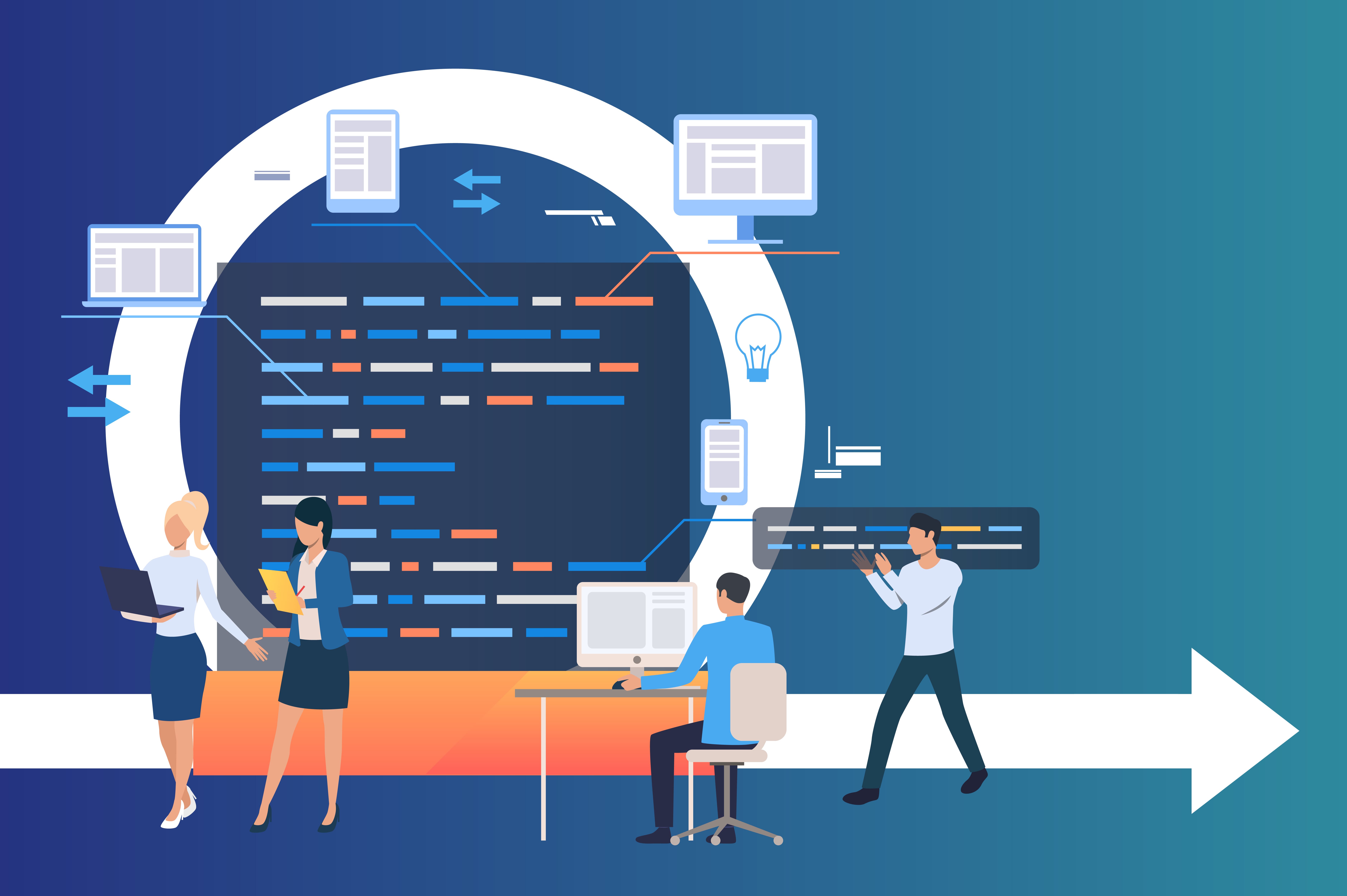If you are developing a mobile app for your business, you should be familiar with the term called MVP (Minimum Viable Product). What is an MVP and how to build an MVP? are one of the most common question in the mind of startup founders while launching a product. The MVP development not only helps startups in validating the app idea but also provide vision for further development of mobile product. An MVP is developed to test new ideas and identify the ways to reach to the targeted audience. In this blog, we will provide you the detailed knowledge about how to develop an MVP.
An MVP is a minimum viable product that has core features that can satisfy the customers and demonstrate the purpose of your app. It also allows the initial users of the app to provide valuable feedback regarding the app’s functionalities. It is the basic version of your app that can be modified from time to time depending upon the response of the users. The MVP app provides a road-map in the development of a full version app. You can easily identify the app store market and the response of the targeted audience. Based on their feedback, you can customize your app features and make it more appealing. In the development process, you do not have to spend more time and cost initially. The product also ensures that there are no bugs and crashes present in the application. An MVP product will help you in testing, designing, and developing the final product with lots of features.
Benefits of an MVP Development
1. MVP Takes Less Time in Development
Developing an MVP model requires less time than a full-blown product. You can develop and launch your MVP in the app store in 1-2 months time. You may expect a few downloads, and also invite a bunch of users to provide feedback and review the app. It helps you to quickly point out the liked and disliked features. It is not recommended to develop a full-blown product and invest time and money unless you have a proven business model. With MVP, you can know it in 1-2 months and use the rest of the time to get feedback and work on version 2 of the app. With the MVP approach, in one year you can do an MVP, get user feedback and build a full product that will be liked and adopted by users.
2. MVP App Requires Less Money
The MVP app requires less money to build than a complete product. It allows you to validate your idea before you spend tons of money in full product. According to research statistics, it is found newly launched apps on the store are unable to gain high downloads and retention rates. The reason is either app is presented properly on the app store or the user did not like it after using it. The MVP app costs you around $10,000 to $20,000 which is very less in comparison to the full-featured app. The full version app might cost you $40-$100K+. Once your app is liked by users and you have enough number of downloads, then you can develop a full-featured app. The risk of your capital will be reduced and you can better spend your money and wisely utilize investors fund.
3. Quickly Launch and Get User Feedback
The MVP app launch allows you to quickly launch the app on respective stores like Google Play and iTunes Store. You can start marketing and building the user base. In the beginning, you can invite friends, family, and relatives to use the app and provide valuable feedback. Meanwhile, you can determine and analyze the limitations, performance, and gaps between the transition screens. You can easily conduct product surveys from users to learn what they don’t like. Once you receive enough feedback, you can work on the next version to add new features, improve performance, and user interface.
Niche Digital Solutions
Have a unique app idea for your Startup? Turn it into a successful Digital Product with Simpalm.
Strategy
Design
Development
Support
Minimum Viable Product Development Process
You can build your MVP app in a few easy steps and launch it on the app stores. The app development process requires a good business plan, market analysis, and required documents in the discovery phase. Once you finalized the requirements, you can start consulting with app design and development agencies in order to get quotations. An affordable and expert app development company will help you finalize the requirements and monetize the system. An MVP app development company can build your first app in the following steps:
Step 1: Understand your Business Requirements before Building MVP
First and foremost, when you start working on an app idea, you should prepare a business plan and how you align your business with the mobile app. The mobile app can allow you to target new audiences and grow your business. Also, you should analyze the essential steps taken by your competitors what they are doing to retain the existing customers and attract new customers. This will help to determine the things that users want in your app and make your success. When you have identified that your product needs an app, you should set long term goals for your business.
Step 2: Decide the Core features of your App
Before you start to develop an MVP app you should prepare the feature list that you want to include in your app. Then, based on their importance, you should prioritize your app features. To prioritize the app features, you should think about what your app users want? and Are you delivering something beneficial?. If the answer is yes, then you are on the right path. The next thing after the feature list, you should categorize the features based on their priority i.e. low, medium, and high priority. These feature lists will help you to cross-check the feature in the end product. Simpalm is a top mobile app development company in DC, and you can contact us for preparing app features list. Now, when you have finalized your app features, you should move forward with the preparation of your app prototypes/ wireframes.
Step 3: Prepare Prototypes/ Wireframes
Now, you have a list of your app features, you should proceed with the preparation of the wireframes for your app. The wireframes will provide you an overview of your app performance. Through the wireframes, you can define each stage of your app, which is necessary to prepare the user flow. If your MVP includes connected hardware or IoT components, partnering with a PCB assembly service ensures your early board prototypes can be produced and tested in parallel with your app flows, keeping hardware and software iterations aligned. When you access each stage of your app, you can identify the drawbacks and the limitations of your app. Based on that, you can implement the necessary steps to overcome those drawbacks. With the help of these wireframes, you can share your app ideas with other people, such as friends, family, developers, designers, and other people. They will act as evidence of your ownership if any situation arises. When you prepare wireframes, you should ensure that they are effective and engaging. You should be able to provide the users with information about the necessary steps involved to reach the main objective. To develop wireframes, you can use designing tools that are available in the market.
Step 4: Build MVP, Test and Learn
When you have finalized your app design, features, you should hire a developer to proceed with the development of your app. You need an experienced developer that will provide you with the front end as well as back end services.
After your product is developed, your app needs to be tested. For that, you need to hire quality Assurance engineers that will work on improving the performance of your MVP app (even if your product is not launched). You should review everything very carefully after you publish your app on the store i.e. the response of the user. This is because the purpose of the MVP app is to capture the market response. Once you start to receive the feedback of the user, you should consider them whether they are positive or negative. You should remember that you are developing an app for the user’s benefit. Therefore, you should never hesitate to ask your users what they want.

 App Development
App Development Web Engineering
Web Engineering AI Services
AI Services Startups
Startups Health / Fitness
Health / Fitness Education
Education Social
Social Nonprofit
Nonprofit Fintech
Fintech Logistics
Logistics Government
Government HR Software
HR Software About Simpalm
About Simpalm Our News
Our News Client Testimonials
Client Testimonials Careers
Careers Awards
Awards Resources
Resources Information
Information


